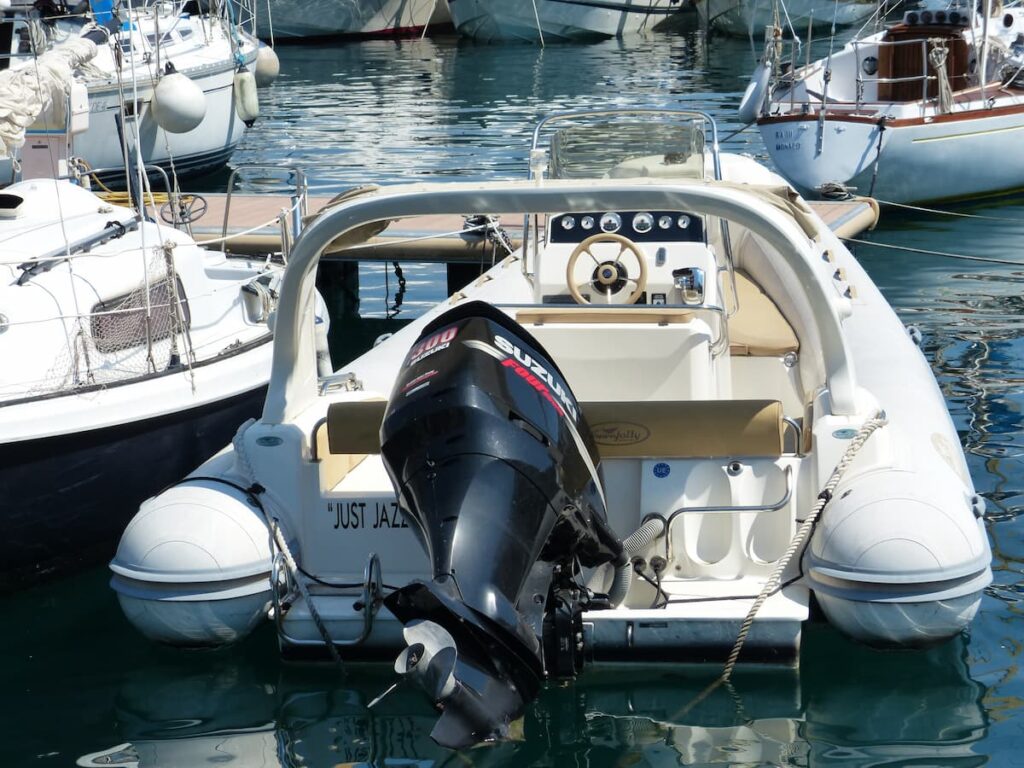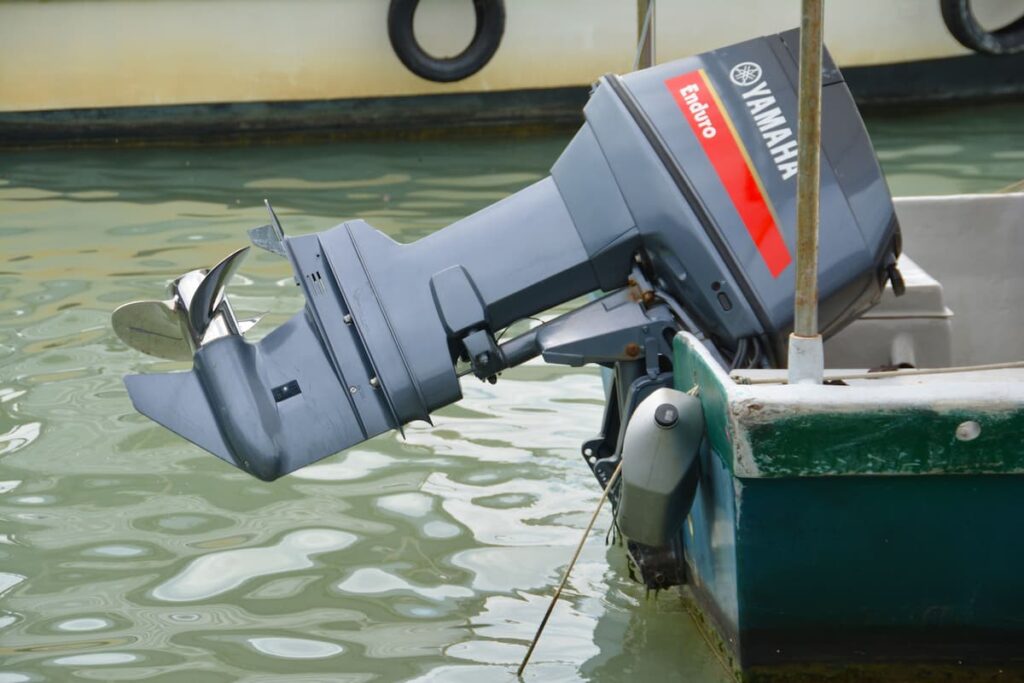Discover the essential role of the transom in boating, a key feature at the stern that supports motors and ensures stability.
Key Takeaways
- The transom is a crucial structural component at the boat’s stern, providing stability and support.
- It serves multiple functions, including supporting the outboard motor and aiding in water flow and drainage.
- Transoms are made from materials like plywood, fiberglass, and aluminum, chosen for their durability and resistance to water damage.
- Regular maintenance is vital to prevent damage and ensure the longevity of the transom.
What Is a Transom on a Boat?
A transom is a structural component of a boat that is located at the stern, or the back, of the vessel. It is typically a flat, vertical surface that connects the two sides of the boat, providing form and structure to the hull. The transom is an essential part of the boat, as it helps to distribute the weight of the motor and other equipment, and provides stability and balance to the vessel.
The transom is also the place where the motor is attached to the boat. This is typically done using bolts or screws, and the motor is secured to the transom using a bracket or clamp.
What is the purpose of a transom on a boat?
The transom on a boat serves several critical functions, including providing a secure platform for attaching the outboard or inboard motor, reinforcing the boat’s structure, and supporting stern-mounted equipment. It’s essential for the boat’s stability, performance, and safety.

Types of Transoms
Transoms come in various designs, each tailored to specific boating needs and performance characteristics. Understanding the different types of transoms can help you select the best option for your vessel, whether you prioritize speed, stability, or access to the water. Here are the primary types of transoms found in boats:
- Full Transom: Offers extensive support and stability, ideal for larger boats.
- Reverse Transom: Features an inward slope for better aerodynamics, common in high-performance boats.
- Cutaway Transom: Provides easier water access and reduced weight, often seen in sailboats.
Choosing the right transom type depends on your boating activities and the equipment you plan to use.
Full Transom
A full transom is a type of transom that extends the full width of the boat. This type of transom is typically found on larger boats and provides a larger surface area for mounting engines and other equipment. A full transom is also known for providing better stability and buoyancy, making it a popular choice for offshore boats.
Reverse Transom
A reverse transom, also known as a Euro transom, is a type of transom that slopes inward at the top. This type of transom is typically found on high-performance boats and provides better aerodynamics, which allows the boat to move through the water more efficiently. A reverse transom also provides a sleek and modern look to a boat.
Cutaway Transom
A cutaway transom is a type of transom that has a portion of the stern cut away. This type of transom is typically found on sailboats and provides better access to the water, making it easier to board the boat from the water. A cutaway transom also reduces the weight of the boat, which can improve its performance.
When choosing a transom for your boat, it’s important to consider the type of boating you’ll be doing and the equipment you’ll be using. Each type of transom has its own advantages and disadvantages, so it’s important to choose the one that best suits your needs.
Functions of Transom on a Boat
The transom on a boat is not just a structural necessity; it plays multiple pivotal roles in the vessel’s functionality and performance. From supporting essential equipment to influencing water dynamics, the transom’s functions are integral to a boat’s operation.
Support for the Outboard Motor
The transom of a boat serves as the primary support structure for the outboard motor. It provides a sturdy and secure platform for attaching the motor, propeller, and other stern-mounted equipment. This allows the boat to move through the water with power and control. The transom must be strong enough to withstand the weight and force of the motor, as well as the stresses of the water.

Attachment Point for the Stern Drive
In addition to supporting the outboard motor, the transom also serves as the attachment point for the stern drive. The stern drive is a propulsion system that combines an inboard engine with an outboard drive unit. The transom on a boat provides a secure mounting location for the drive unit, which is essential for the proper operation and control of the boat.
Water Flow and Drainage
The transom also plays a critical role in the flow of water around the boat. It is designed to provide a smooth and efficient flow of water, which helps to reduce drag and improve performance. Additionally, the transom on a boat includes drainage holes or scuppers that allow water to drain out of the boat. This helps to prevent water from accumulating in the bilge and causing damage or instability.
Components of Transom on a Boat
The components of a transom on a boat include the transom plate, splashwell, drain plug, and trim tab. These components work together to reinforce the transom, catch and drain water, and adjust the trim of the boat.
Transom Plate
The transom plate is a metal or fiberglass plate that is bolted to the transom. It serves as a reinforcement for the transom and helps distribute the weight of the motor. The plate is typically made of stainless steel or aluminum and is bolted to the transom using stainless steel bolts.
Splashwell
The splashwell is the area between the transom and the cockpit. It is designed to catch any water that comes over the transom and drain it out of the boat. The splashwell is typically lined with rubber or plastic to prevent water from seeping into the boat.
Drain Plug
The drain plug is a small plug located in the bottom of the transom. It is designed to allow any water that collects in the splashwell to drain out of the boat. The plug can be removed to drain the water and then replaced to prevent water from entering the boat.
Trim Tab
The trim tab is a small metal plate located on the lower unit of the motor. It is used to adjust the trim of the boat while underway. By adjusting the trim tab, the operator can raise or lower the bow of the boat, which can improve the boat’s performance and fuel efficiency.
What Are Boat Transoms Made Of?
A boat transom is a critical structural component of a boat that supports the weight and power of an outboard motor. The transom on a boat is typically made of materials that are strong, durable, and resistant to water damage. Here are some of the most common materials used for boat transoms:
- Plywood: Plywood is the most common material used for boat transoms. It is made by bonding together layers of wood veneer with adhesive. Marine-grade plywood, which is specially treated to resist water damage, is often used for boat transoms.
- Fiberglass: Fiberglass is a popular material for boat transoms because it is lightweight, strong, and resistant to water damage. Fiberglass transoms are typically constructed by layering fiberglass cloth and resin over a mold.
- Aluminum: Aluminum is a lightweight and durable material that is often used for boat transoms. Aluminum transoms are typically constructed by welding together aluminum sheets and extrusions.
When choosing a material for a boat transom, it is important to consider factors such as strength, durability, weight, and resistance to water damage. It is also important to ensure that the material is compatible with the type of outboard motor that will be used with the boat.
Proper maintenance and care of a boat transom is crucial to ensure its longevity and performance. This includes regularly inspecting the transom for signs of damage, such as cracks or rot, and addressing any issues promptly. It also involves properly sealing penetrations in the transom, such as motor mounting bolts and other holes for nuts, screws, and bolts, to prevent water from entering and causing damage.
Are The Stern And Transom The Same Thing?
When it comes to boats, the terms “stern” and “transom” are often used interchangeably, but they are not the same thing. The stern refers to the entire aft or back end of the boat, including the transom, the rear deck, and the surrounding area. The transom, on the other hand, is a specific structural component of the stern.
The transom on a boat is the reinforced vertical portion that connects the two sides of the hull and offers the boat stability and shape. It is part of the boat that is furthest to the back, and it is where the outboard motor is typically attached. The transom is structurally tied together with the keel and sides of the boat, making it an important part of the vessel’s overall design and construction.
While the terms “stern” and “transom” are often used interchangeably, it is important to understand the difference between the two. The stern refers to the entire back end of the boat, while the transom is a specific part of the stern that is essential for the boat’s stability and performance.
What is a Transom Saver?
A transom saver is a device designed to protect your boat’s transom from undue stress while trailering your boat. It is essentially an outboard motor support that attaches to the trailer and the outboard motor to support the weight of the motor during transport.
The transom saver typically consists of a metal bar that extends from the trailer’s rear cross member to the outboard motor’s lower unit. It helps to distribute the weight of the motor evenly across the trailer and reduces the stress on the transom. Transom savers are especially important for boats with larger outboard motors that weigh more and put more stress on the transom while trailering.
Transom savers come in different sizes and shapes to fit different types of boats and outboard motors. Some transom savers are adjustable to fit different motor heights, while others are designed for specific motor sizes. It is important to choose a transom saver that is appropriate for your boat and motor to ensure that it provides adequate support and protection.
- Types of Gas Carriers as per IGC Code – April 22, 2025
- Wind-Assisted Propulsion Systems (WAPS): A Game Changer for Maritime Decarbonization – February 6, 2025
- 10 Boat Salvage Yards in California – January 25, 2025



